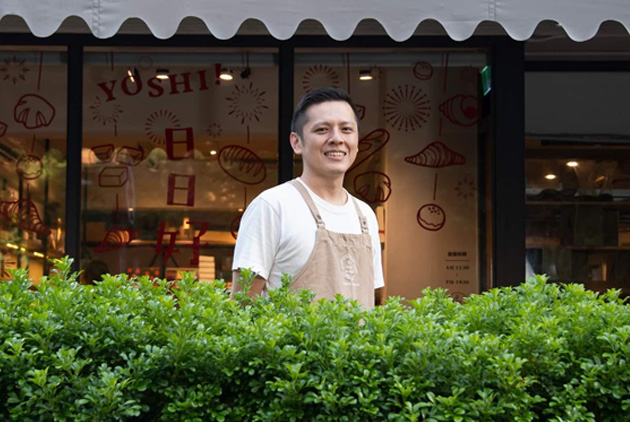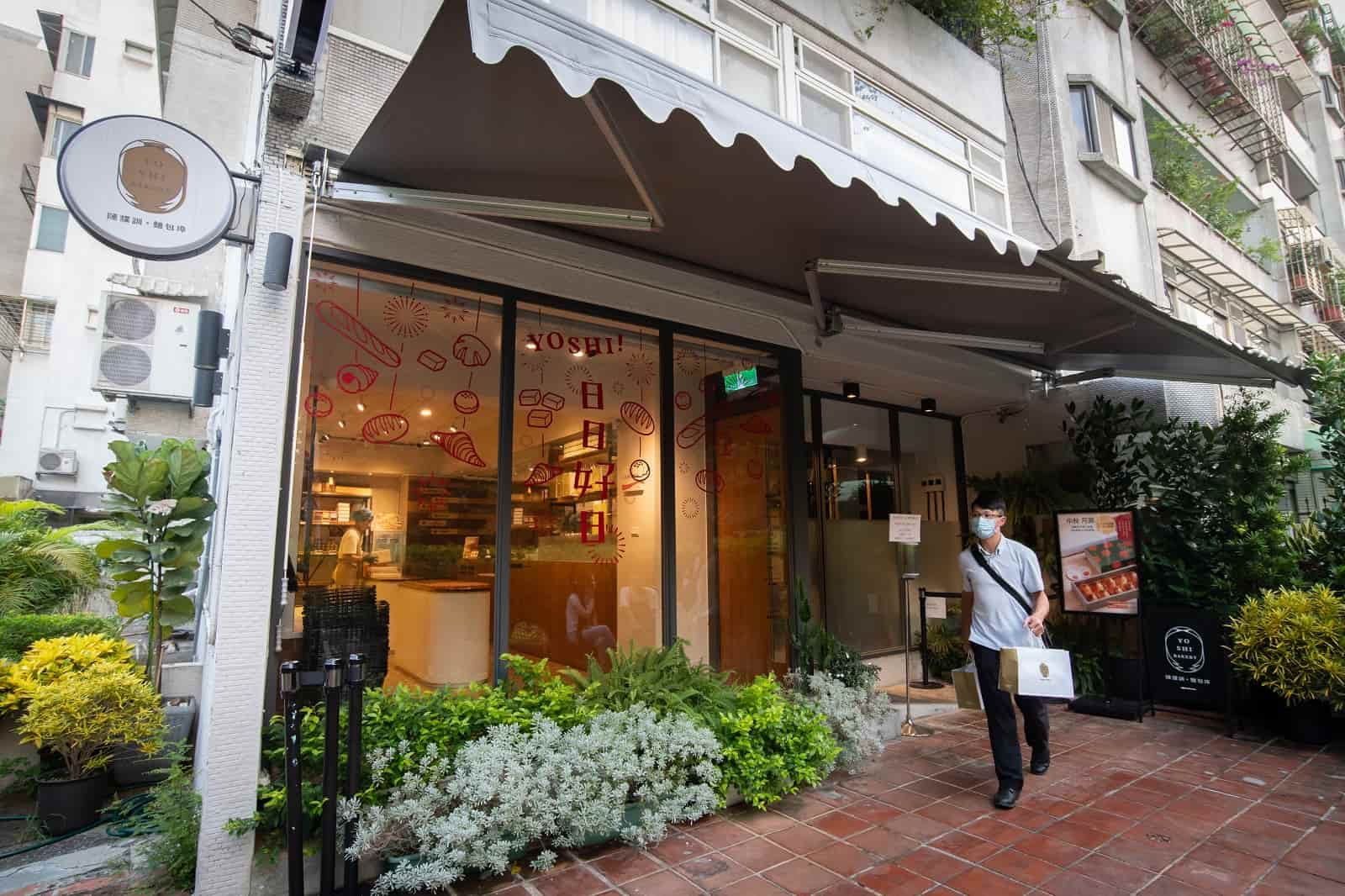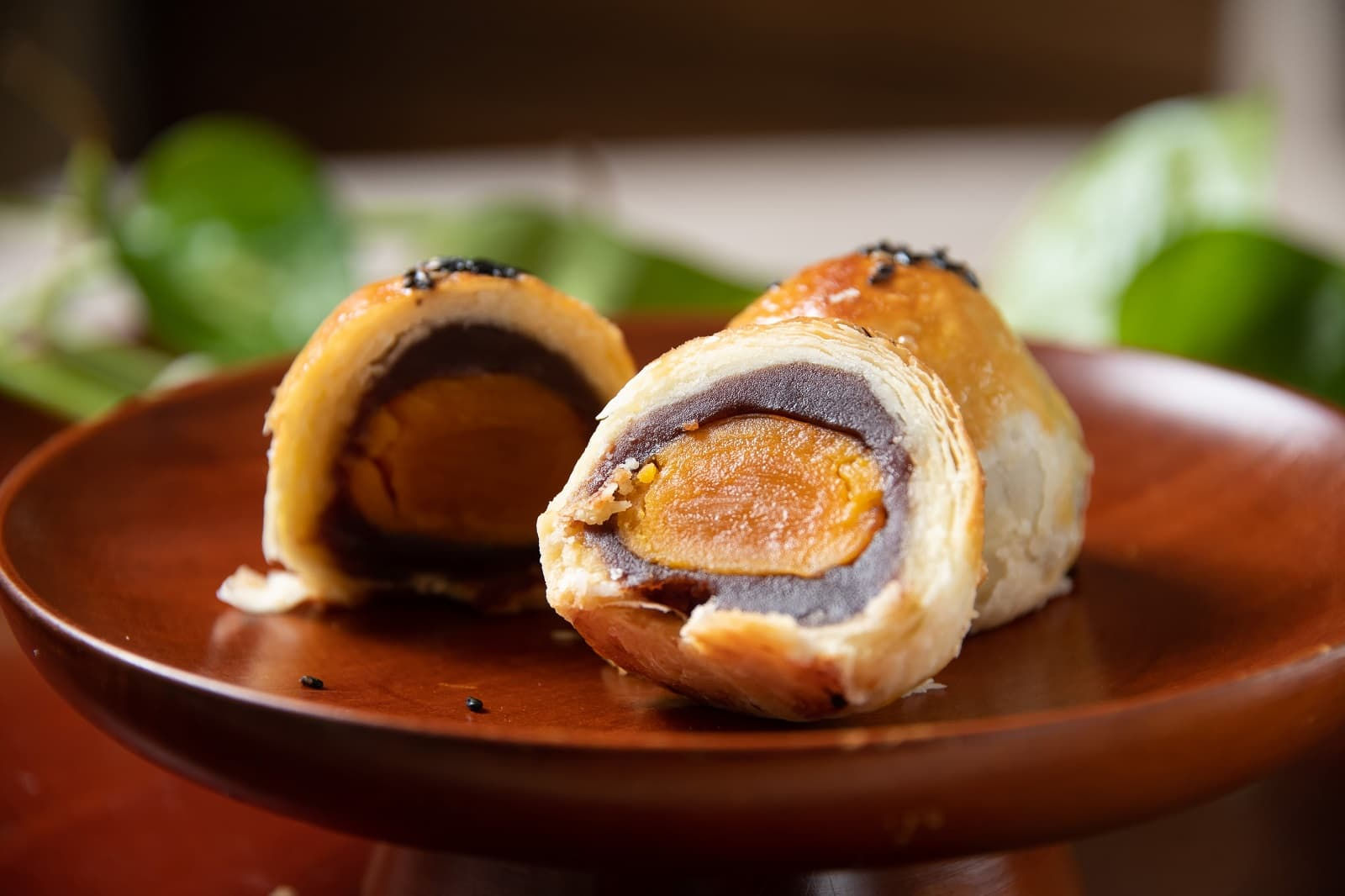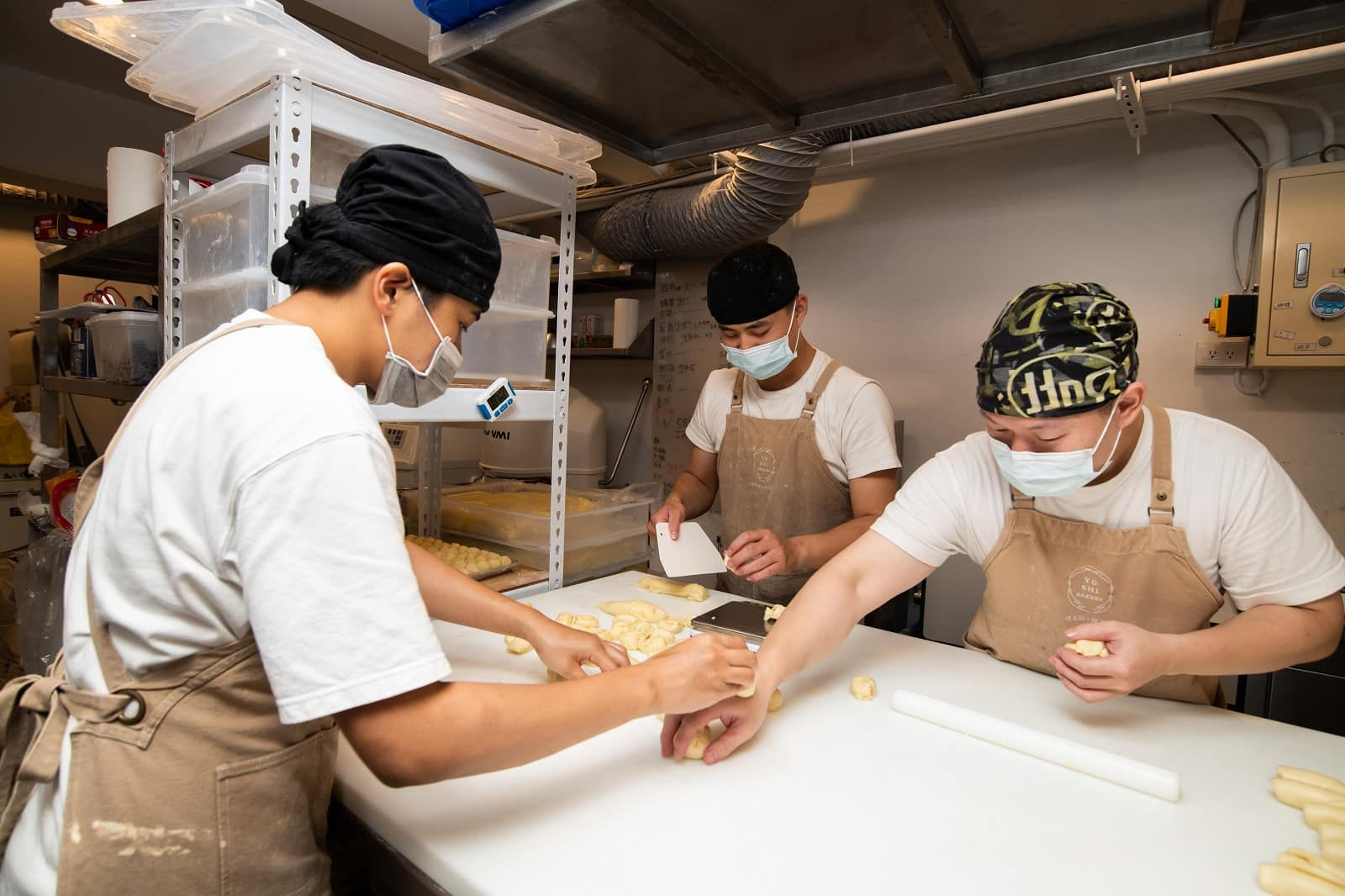Exquisite Mooncakes of Master Baker Cause Craze in Taipei

Source:Ming-Tang Huang
The most sought-after Moon Festival gift this year were flaky mooncakes with a filling of salted egg yolk created by master baker Chen Yao-hsun, only the third Taiwanese to win the equivalent of the breadmaking world championship. Yet Chen, who dropped out of school in high school, found his calling only after a winded detour.
Views
Exquisite Mooncakes of Master Baker Cause Craze in Taipei
By Yi-chih Wangweb only
A long queue forms in front of Yoshi Bakery, which is huddled away in an alley off Dunhua North Road in Taipei, from 7 a.m. although the shop opens only several hours later at 11:30 a.m. As soon as opening time arrives all available waiting numbers for the day have been dispensed.

The mooncakes were all sold out.
“People have been standing in line for a month now but we just can’t produce these quantities. Aside from serving the queuing customers we also need to meet preorders,” explains Chen. Although Chen won the World of Bread (Mondial du pain) contest in Paris in 2017, customers do not flock to the bakery for its world-class bread but to purchase flaky mooncakes, normally an unassuming, traditional Taiwanese pastry.
“This September all of Taipei City went crazy over flaky mooncakes,” says Chen Lu-kwan, founder of Meowvelous Café and Restaurant, “the queues were as long as for ramen noodle eateries and shops selling freshly baked toast.”
Why did flaky mooncakes suddenly become so popular? Culinary writers believe it is linked to the coronavirus pandemic which has made international travel virtually impossible.
With borders closed, the Taiwanese were no longer able to bring back seasonal delights from abroad, in particular the famous egg custard mooncakes from the Peninsula Hotel in Hong Kong. At the same time, the locals do not love pineapple cakes, another traditional Taiwanese pastry, as much as foreign tourists, so they turned to the flaky mooncakes that are typically eaten during the Moon Festival season, pushing up demand.
Pandemic Makes Traditional Pastry Sought-After Delicacy
In the past, flaky mooncakes were mainly made by traditional pastry shops. But over the past two years, pastry chefs in western bakeries got involved, adding an innovative, modern twist to the filling and turning the unassuming, traditional pastry into a high-end confectionary.
Aside from Chen, there are also Wang Peng-chieh (aka Chef Jay), who won the Bakery Master title in the artistic piece category in 2018, and Le Ruban Pâtisserie who have used Western pastry baking concepts and techniques to reinterpret classical Chinese-style flaky mooncakes with salted egg yolk.
But it was Chen who kicked off the revolutionary refinement of the ordinary mooncake. Last year, he added his own interpretation of the mooncake to the bakery’s offerings only to meet seasonal demand, triggering an unexpectedly enthusiastic response. Despite a price of NT$70 per piece, doubling its average price tag, 50,000 mooncakes were sold last year. This year customers inquired about the pastries, traditionally eaten during the Mid-Autumn festival in late September or early October, as early as June.

“In contrast to other innovators, who change everything regardless of whether the tradition is good or bad, Chen acknowledged from the beginning that the tradition was good. He only wanted to improve the flaky pastry,” notes Chen Ching-yi, a food critic who has tasted at least ten different mooncakes with flaky pastry. She praises Chen’s version as “nearly perfect”.
In order for the flaky mooncakes to taste good, the duck egg yolk is crucial. Chen uses duck egg yolks that have been cured in a reddish soil paste mixed with salt for 22 days. Seeking to augment the flavor, Chen also replaced the traditionally used pork lard with award-winning Lurpak butter from Denmark.
The ideal pastry Chen had in mind is not only flaky but also crispy. He blended the technique for making croissant pastry, which he has mastered perfectly, with the process for making flaky mooncake pastry. He decreased the number of folds to achieve a crispier texture. And instead of using all-purpose flour, he used strong flour from famous Japanese flour mill Kumamoto, typically used for European bread, which absorbs more water. After a few moments in the mouth, the pastry breaks apart into its buttery layers.
The mooncakes are basted with egg wash at least twice to make their surface smooth and shiny. They are baked until the bottom has turned into a crispy crust for an even more diverse texture.

The salted egg yolks are sprayed with Kaoliang liquor to get rid of undesirable flavors before they are baked to a mellow and rich flavor in the oven. Coated with a layer of lightly sweetened red bean paste the bright orange egg yolks serve as filling for the mooncakes.
“He (Chen) creates a piece of art rather than making a product,” says food critic Chen. She notes that Chen, the baker, has upgraded every part of the flaky pastry mooncake to take it to another level.
When Chen participated in the World of Bread contest in 2017, he did not do it for honor and glory but because competing with the best bakers around the world could force him to evolve mentally. “I wanted to know whether the criteria that I had established for bread would gain the approval of jurors from around the world,” notes Chen.
Rebellious High-school Dropout Falls in Love with Bread
The 39-year-old Chen Yao-hsun comes across as a sophisticated man. It is hard to imagine that he was a rebellious youth who dropped out of high school. He had his first encounter with the world of baking when his father sent him to work as an apprentice in the food factory of a friend.
“Bread has yeasts so it feels like it is alive. It will change depending on the temperature, humidity and time, it is a very interesting thing,” explains Chen. After this first brush with bread, Chen had many jobs. But once he got into bread making he did not change direction anymore despite setbacks.
After learning how to make Taiwanese-style breads for ten years, Chen went to Taichung to learn European breadmaking from scratch with Japanese master baker Tomohiro Nogami. “It meant starting all over from square one. How can you call yourself a master baker if you cannot make croissants or baguette?” exclaims Chen.
Before Chen took up the challenge of the World of Bread contest, he had already opened a bakery in Kaohsiung but since European bread was not popular at the time, daily sales stood only at a meager NT$3,000 in the beginning.

At the same time, he lost in the Taiwan area national selections for the Louis Lesaffre Cup, which leads up to the Bakery World Cup, another prestigious international bread competition based in Paris. He was so devastated by his defeat that he vowed never to participate in a competition again. Thanks to the encouragement from his wife, who is also a trained baker, he pulled himself together for another shot.
Chen’s path to master baker honors was not as dramatic as that of Wu Pao-chun, the first Taiwanese to win a Master Baker title. Therefore, he was only catapulted to fame after winning awards for developing bread without additives sold in convenience stores.
Chen seized opportunity when it came his way. Two years ago, when the lease for this bakery in Kaohsiung was up after seven years, he and his wife decided to open a bakery in Taipei instead and to simply focus on making good bread, be it Taiwanese or European style.
Being a Baker More Important than International Acclaim
Chen hopes to reinterpret the classical Taiwanese breads that the locals love by using top-quality ingredients and improved techniques. In contrast to European bread with its crispy, crunchy oven crust, Taiwanese breads have a smooth, soft texture. And they usually come with sweet stuffing or fillings.
Take for instance buns with peanut filling. Chen has modified the filling. He uses peanut variety No. 9, said to be the most aromatic one, from Yunlin, Taiwan’s major peanut producing area. The peanuts are ground into powder and blended into a filling with less sweet, cultured Italian butter instead of commonly used margarine. He also reshaped the round buns into long, slim ones so that each bite comes with the full flavor of the peanut and butter blend.
After his flaky mooncakes became such a hit, some people advised Chen to give up on bread to produce the seasonal pastry year-round. But he believes mooncakes should remain only a seasonal offering for the Mid-Autumn festival.
On his right arm Chen sports a tattoo with the World of Bread award, a croissant and a baguette, which he got himself after winning the contest. It is meant to alert him to the fact that despite all international acclaim, he is after all a baker.
Have you read?
♦ How Pingtung Cacao Won the Chocolate Olympics
♦ Michelin Guide Taiwan – Taipei vs. Taichung
♦ Beyond Basic: Man Cave Gourmet Burgers
Translated by Susanne Ganz
Uploaded by Penny Chiang






